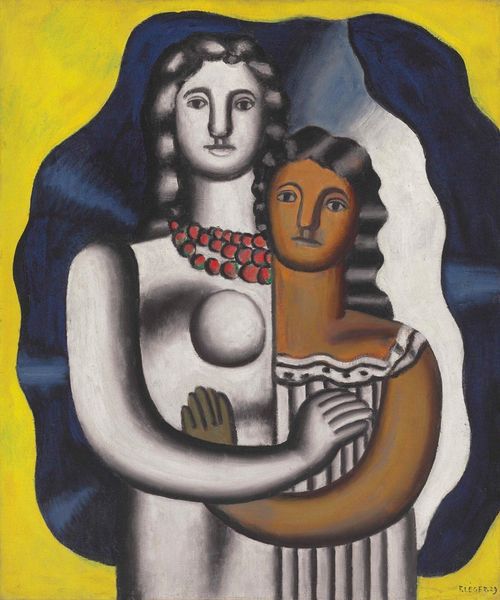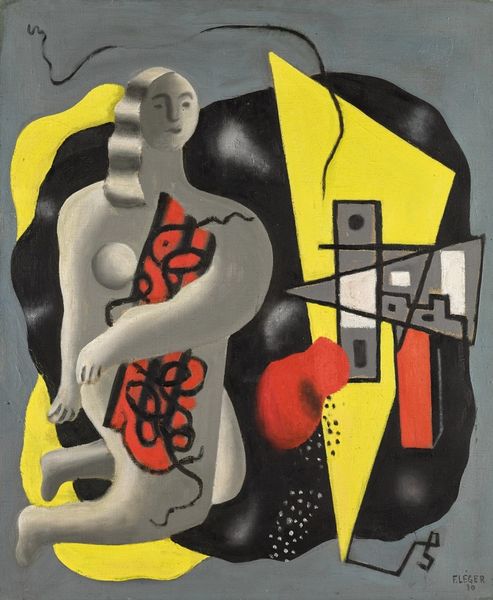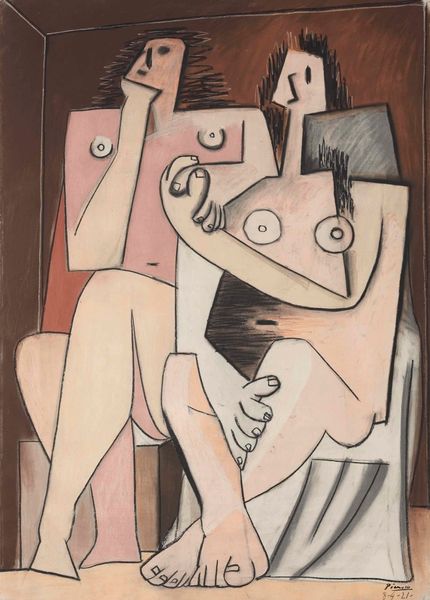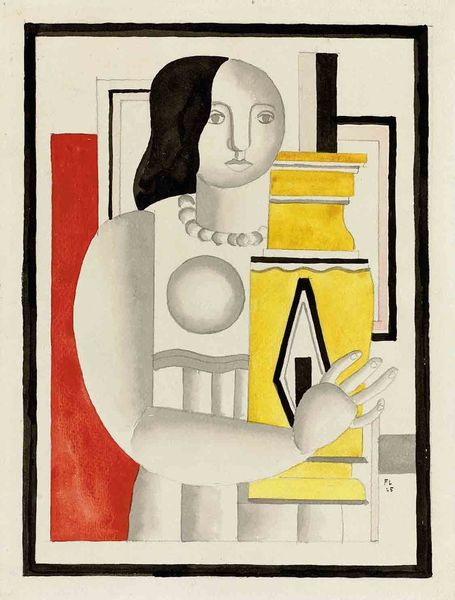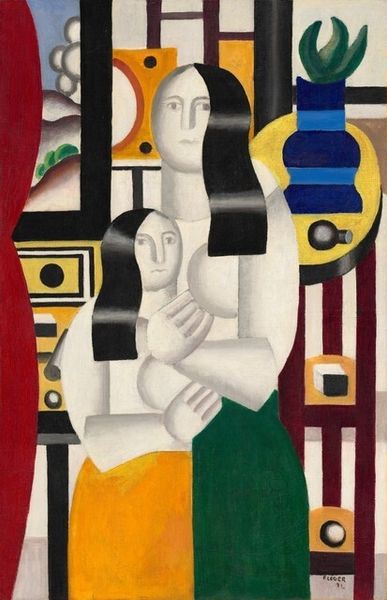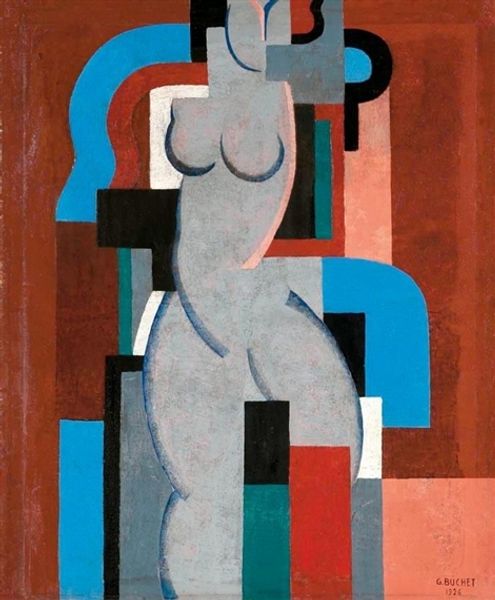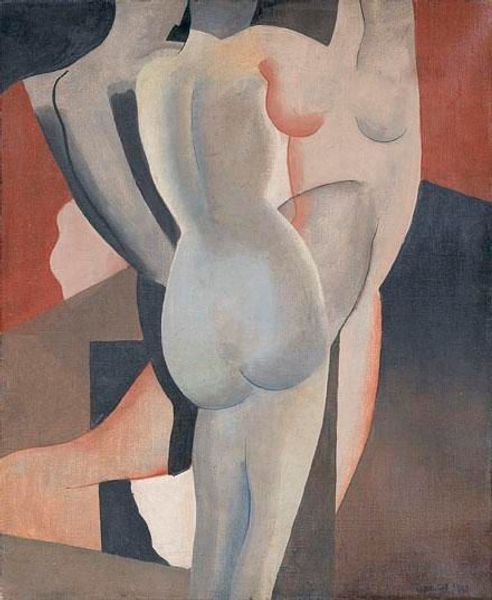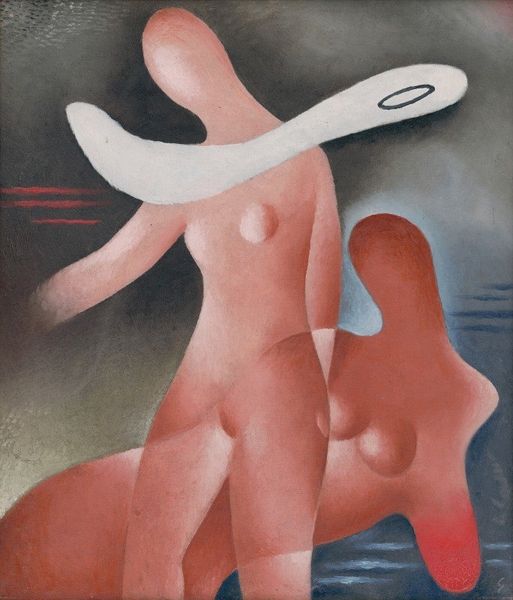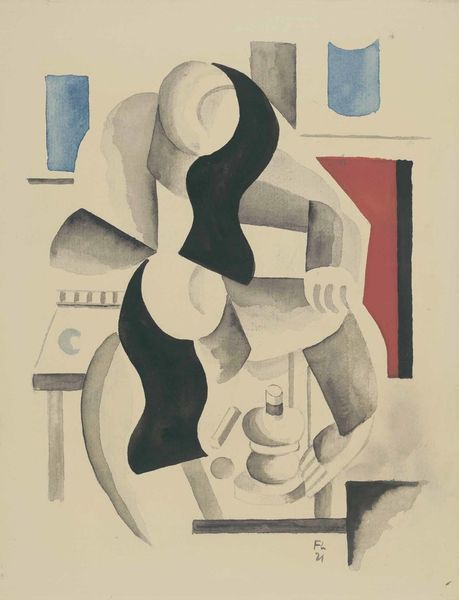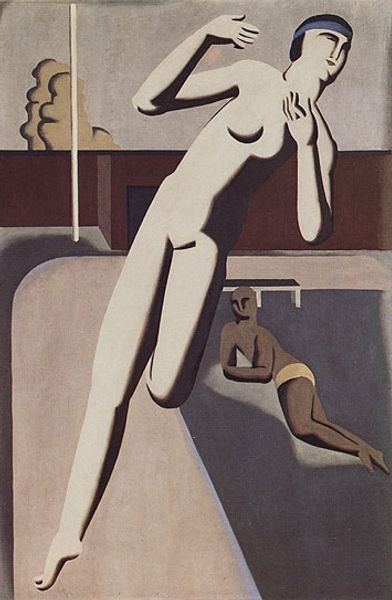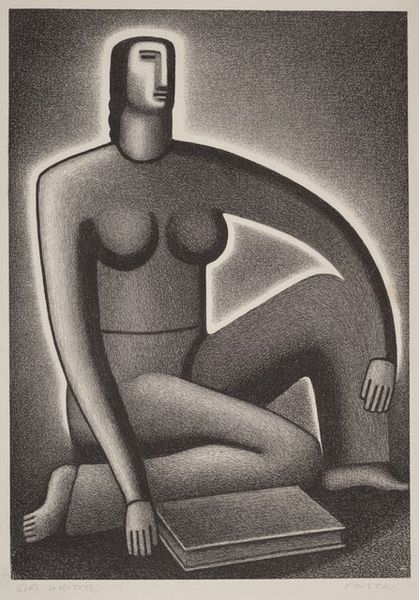
painting, oil-paint
#
portrait
#
cubism
#
purism
#
painting
#
oil-paint
#
figuration
#
portrait art
#
modernism
Copyright: Modern Artists: Artvee
Editor: Fernand Léger's "Deux Femmes," painted in 1929 with oil paints, really strikes me with its strong, almost architectural forms. There's a serenity to their faces, but also a distance. How do you interpret this work? Curator: The lasting strength of this "Deux Femmes" arises from its reduction of the human form into essential shapes and colours, an exploration deeply rooted in the Purist movement of its time, seeking universality. Léger here touches upon the archetypal female image. Do you see how the arrangement of figures and spheres suggests harmony? Editor: Yes, I do! It’s interesting you point out the spheres, which look so modern, almost like industrial elements. The colors also feel very bold. Curator: Absolutely! Consider, then, the visual language. Léger juxtaposes these organic forms with geometric elements – a dialogue between nature and industry, very resonant for a post-World War I world seeking to reconcile these themes in the human psyche. This evokes enduring concepts like motherhood and creation. Editor: So, even in what looks like abstraction, there are underlying symbols that point to very human experiences? Curator: Precisely! And notice that the women appear connected and independent, each complete. The arrangement promotes a modern interpretation of women in society, breaking through traditional archetypes. Editor: That makes me see the piece in a whole new light, recognizing not just the aesthetic, but its statement on womanhood during that period. Curator: It's remarkable how Léger uses that simple symbolism to communicate the emerging role of women. Art can serve as a cultural artifact reflecting society's transformations.
Comments
No comments
Be the first to comment and join the conversation on the ultimate creative platform.

